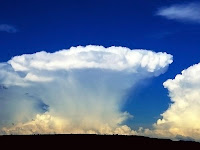The Great Wall of China is a series of fortifications
running in general east to west through the entire northern part of China,
which is made of stone, brick, tamped earth, wood, and other materials, built
originally in part to protect the northern borders of the Chinese Empire or its
prototypical states against intrusions by various nomadic groups or military
incursions by various warlike peoples or forces. Several walls had already been
begun to be built beginning around the 7th century BC, these, later joined
together and made bigger, stronger, and unified are now collectively referred
to as the Great Wall. Especially famous is the wall built between 220–206 BC by
the first Emperor of China, Qin Shi Huang. Little of that wall remains. Since
then, the Great Wall has on and off been rebuilt, maintained, enhanced; the
majority of the existing wall was reconstructed during the Ming Dynasty.
Other purposes of the Great Wall have included allowing for
border control practices, such as check points allowing for the various
imperial governments of China to tariff goods transported along the Silk Road,
to regulate or encourage trade (for example trade between horses and silk
products), as well as generally to control immigration and emigration.
Furthermore, the defensive characteristics of the Great Wall were enhanced by
the construction of watch towers, troop barracks, garrison stations, signalling
capabilities through the means smoke or fire, and the fact that the path of the
Great Wall also served as a transportation corridor.
 The Great Wall stretches from Shanhaiguan in the east, to
Lop Lake in the west, along an arc that roughly delineates the southern edge of
Inner Mongolia. The most comprehensive archaeological survey, using advanced
technologies, has concluded that all the walls measure 8,851.8 km (5,500.3 mi).
This is made up of 6,259.6 km (3,889.5
mi) sections of actual wall, 359.7 km (223.5 mi) of trenches and 2,232.5 km
(1,387.2 mi) of natural defensive barriers such as hills and rivers.
The Great Wall stretches from Shanhaiguan in the east, to
Lop Lake in the west, along an arc that roughly delineates the southern edge of
Inner Mongolia. The most comprehensive archaeological survey, using advanced
technologies, has concluded that all the walls measure 8,851.8 km (5,500.3 mi).
This is made up of 6,259.6 km (3,889.5
mi) sections of actual wall, 359.7 km (223.5 mi) of trenches and 2,232.5 km
(1,387.2 mi) of natural defensive barriers such as hills and rivers.
A previously unknown section of the wall was discovered in
Mongolia by British explorer William Lindesay.
.gif)






.jpg)





.jpg)














.jpg)



.jpg)




.jpg)











